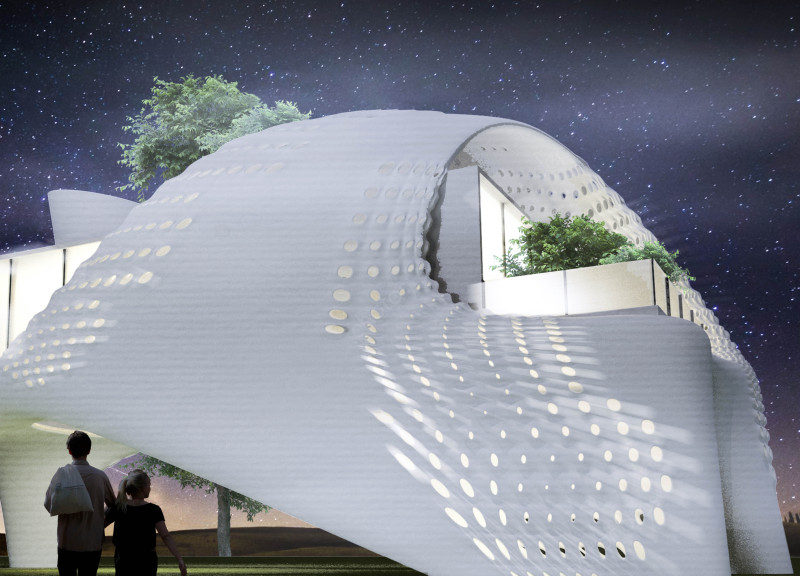5 key facts about this project
The "Looking Forward" design is located in the scenic regions of New Zealand. It serves as a compact living space for two people, showcasing a thoughtful blend of different architectural styles. The design plays with both rigid geometric forms and a more fluid, organic shape that comes from 3D printing. This combination aims to create a comfortable environment, emphasizing natural light and effective ventilation.
Design Concept
In this design, parametric modeling shapes the envelope that wraps around the living unit. By adjusting various points in the model, the shape of the building can change, allowing for multiple configurations that are both functional and visually interesting. This flexibility offers a range of options that meet the needs of the environment and the inhabitants.
Environmental Performance
Environmental considerations are a core part of the design. The outer skin is designed to enhance airflow and maximize daylight. Its porous structure allows sunlight to enter during winter while providing shade in the summer. This feature reduces the need for heating and cooling, which contributes to an energy-efficient living space that adapts to seasonal changes.
Construction Techniques
The construction approach for this design involves digital fabrication methods, particularly 3D printing. Using a mixture of local soil and specific additives, the outer shell of the building is produced on-site. This process not only reduces transportation costs but also promotes sustainability by utilizing materials that are readily available, maintaining precision throughout construction.
Aesthetic Considerations
Inside, the cabin offers an open layout, allowing for various living activities without traditional walls. This openness creates a sense of spaciousness and flexibility. The furniture is placed strategically to define different areas within the space. A central tree is featured in the design, surrounded by a glass cylinder, serving both as a visual focal point and a means of improving airflow.
Large windows let in plenty of natural light, creating a warm atmosphere inside. The play of light and shadow on the outer skin adds a dynamic quality to the living environment. Views of the surrounding landscape are unobstructed, reinforcing the connection between the home and its natural setting.






















































